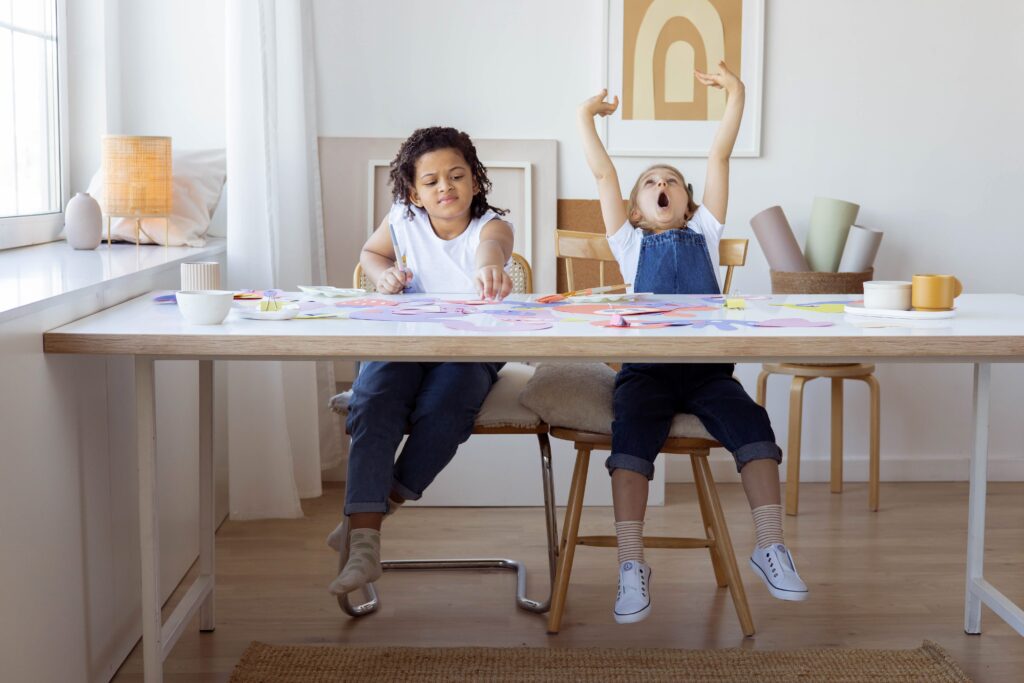Introducing the Art to Children with Learning Disabilities
The arts can provide numerous benefits for children with learning disabilities. We know that children with learning disabilities often possess unique strengths and skills that can go unnoticed in a traditional educational setting. The arts provide a gateway for these children to express themselves, develop essential skills, and experience personal growth. Through the exploration of various art forms, such as visual arts, music, theater, and dance, children with learning disabilities can flourish and thrive. From GaurBlogs, here’s how you can instill a passion for the arts in your child !

6. Common Way to Children Learning Disability.
1. Get Excited About Art
Getting excited about art yourself is a great way to spark your children’s interest in artistic expression. Model your enthusiasm, create a positive atmosphere for expressing artistic ideas, and share your experiences exploring different forms of art. You might even uncover a passion for sharing the arts in the form of teaching
2. Art Business Ideas
Encouraging your child’s interest in art-related business ideas is a wonderful way to nurture their creativity and entrepreneurial spirit, especially if they enjoy making art. Discuss with them the myriad career paths where art and business intersect. For instance, they could explore becoming a freelance illustrator, opening their own art gallery, or starting an online store selling their artwork or handmade crafts.
Another avenue is graphic design, where art meets the digital world, offering opportunities in advertising, web design, and branding. Encouraging them to learn about these fields, perhaps through online courses or local workshops, can give them a practical understanding of how to turn their passion for art into a viable career. This support not only validates their artistic talents but also empowers them to envision a future where their creativity and business acumen can flourish together.
3. Display Your Child’s Artwork
According to Artventure.com, displaying and preserving your child’s artwork is a meaningful way to support their artistic development and cultivate their passion for creativity. When there’s no space left on the fridge, consider scanning their art so you can save them for years to come. This will also make it easier to share your child’s art with friends and family! By preserving digital copies of your child’s art, you’ll be celebrating their creativity and creating lasting memories.
4. Observe and Nurture Your Child’s Interests
By paying attention to your child’s artistic preferences and providing opportunities for exploration, you can help them discover the types and forms of art that resonate with them. This will enable you to tailor their artistic experiences to match their individual style and needs. For example, the visual arts such as painting and drawing are fantastic for fine motor development and may also allow your child to communicate ideas, emotions, and experiences that might be challenging to express through traditional verbal or written means. Music, theater, dance, and digital media also come with their own benefits. Observe how your child interacts with these different forms of art so you can nurture their interest in those that benefit them the most!
5. Explore Community Resources
Local organizations, institutions, and community centers often offer programs and initiatives specifically designed to engage children with learning disabilities in the arts. For example, many communities have inclusive art programs that cater specifically to children with diverse abilities, providing a supportive environment where children can engage in various art forms alongside their peers. You may also find specialized art classes and workshops, art therapy services, and community projects tailored to children with learning disabilities.
6. Create a Home Art Space
Keep in mind that your child may face hurdles and frustrations as they navigate the artistic process, so do what you can to instill confidence in your child. Create a safe space where your child can explore their individual learning process, take risks, and step outside their comfort zone. This will encourage your child to try new techniques and get creative without fearing failure. Additionally, converting a room for this purpose may increase your home’s value if you make buyer-friendly upgrades. Be sure to document any changes after you’re done renovating.
Incorporating the arts into the lives of children with learning disabilities can be a transformative experience. By displaying and digitally saving your child’s artwork, teaching art yourself, and encouraging your child to explore different forms of art, you can foster a positive and safe environment in which your child can unlock their unique talents and develop a love for the arts.
Author By-Linda Robinson
